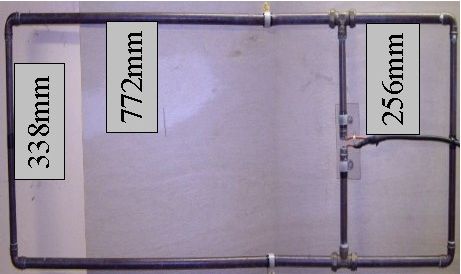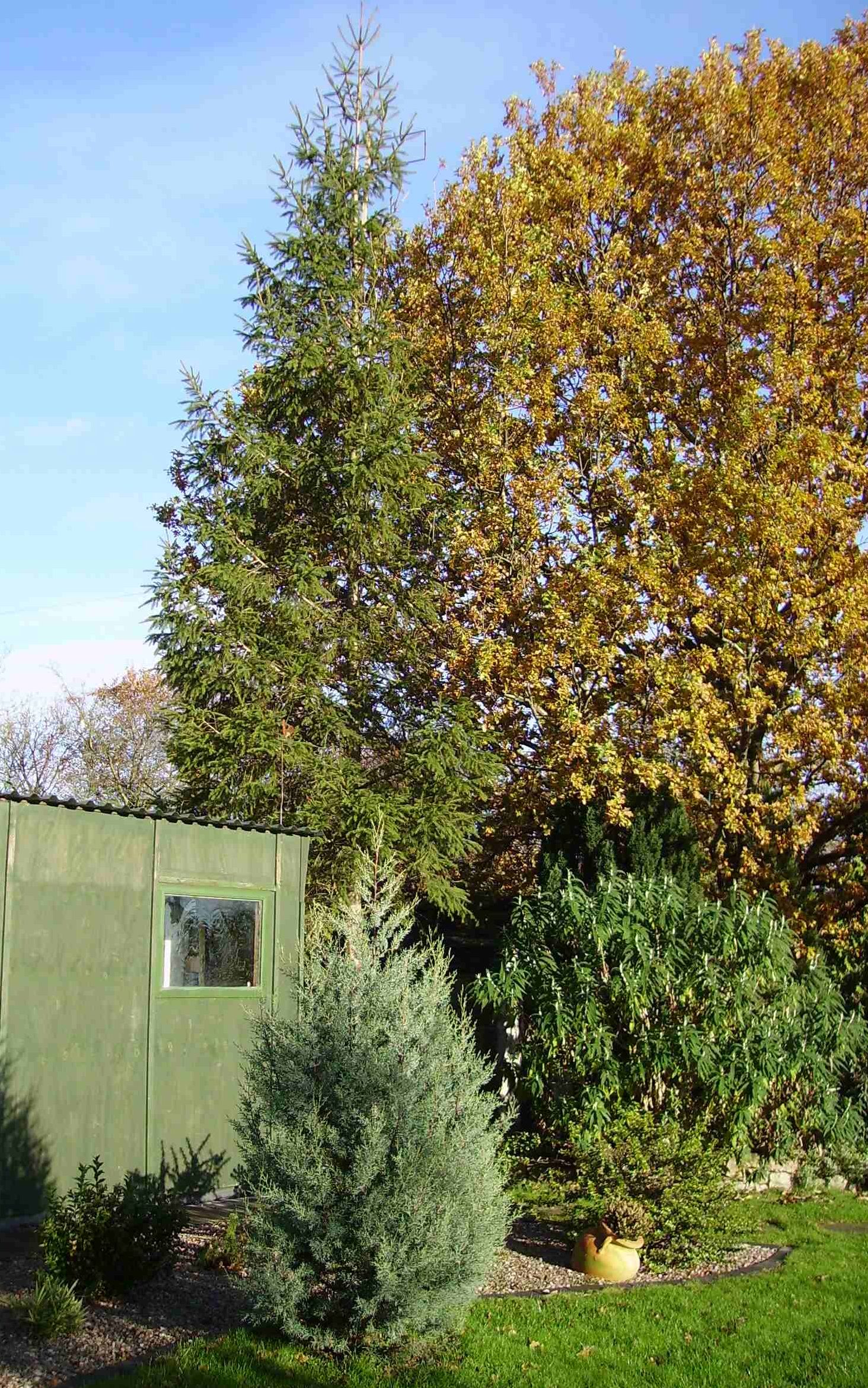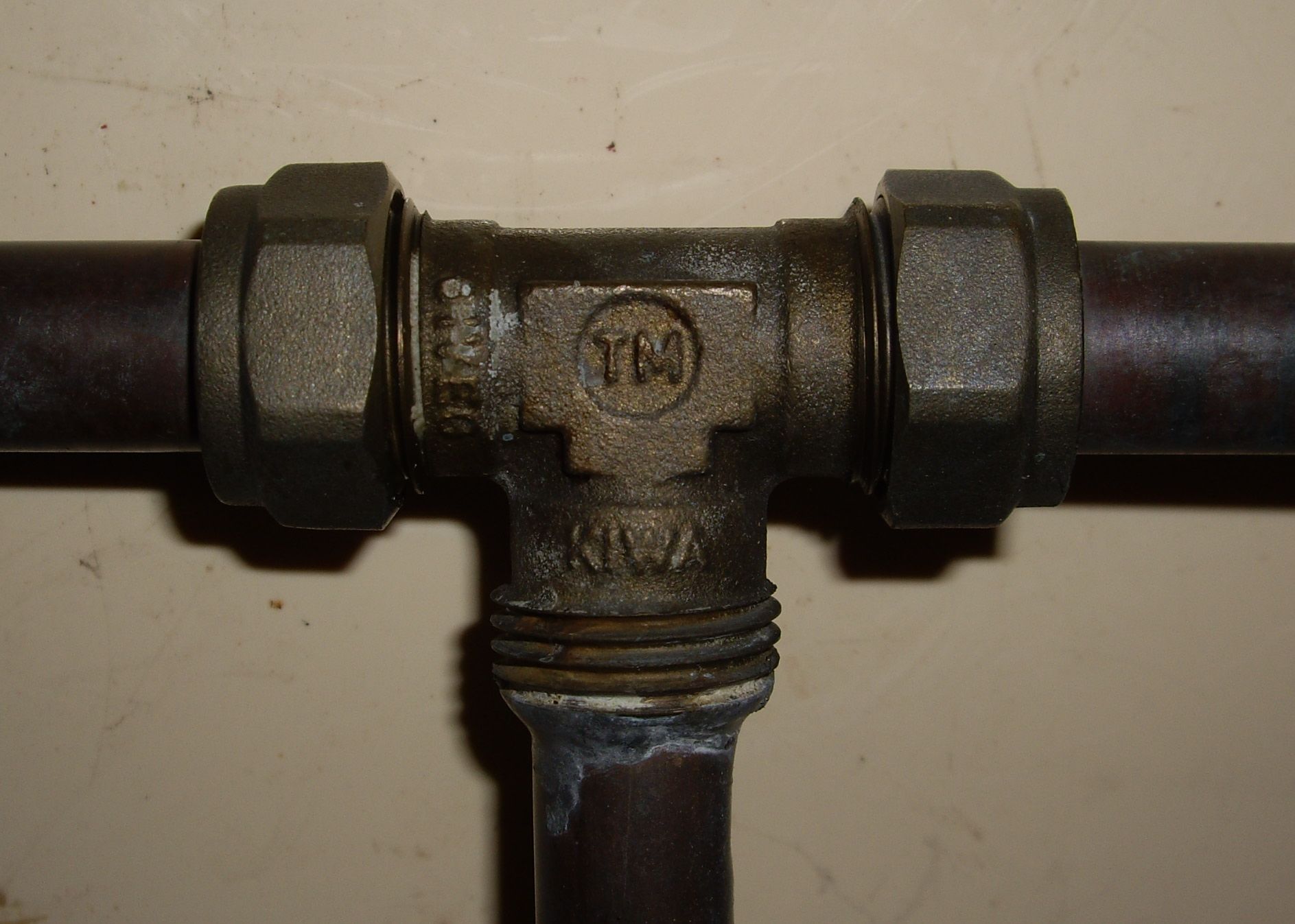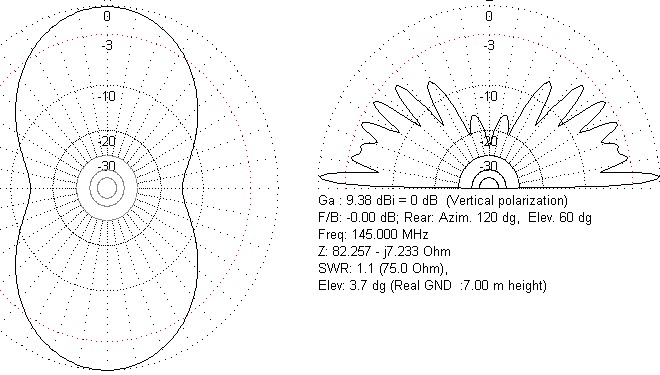




Next to my shack in the garden is planted a discarded Christmas tree which was at least 10 metres tall in 2006. It's probably a Norway Spruce, the previous owner of this house planted out all his old Christmas trees and this is the sole remaining one. Growing straight up with a paucity of leaves it seemed a shame not to put it to good use so I decided to make a 2 metre aerial and place it at the top of the tree on a piece of batten.
The conventional Yagis were easily bent and rather obvious so I experimented for some while with a Hentenna, a sort of “slot” aerial, made with 15mm copper pipe. The main dimensions were achieved with suitable software and then a considerable time was spent trying to match the thing up with a half-decent SWR. It didn't help that I insisted on buying 75ohm TV satellite cable on a 100m reel (for not much money I must add). One problem was that, near the ground or any metal objects like my shed roofs, the SWR was extremely variable. Eventually I stuck this Hentenna up in the tree on a tanalised batten, fixed with nylon P-clips, and climbed up with a spanner and rubber mallet, adjusting the radiator tapping painstakingly (there was a gale force wind on that day) and managed an excellent match over the entire 2 metre band.
Incidentally it's amazing that you can spy on people whilst up a tree and they don't have any idea there's someone up there. The aerial itself has oxidised sufficiently to “disappear” and, being a closed rectangle, is exceedingly robust. According to the modelling software it is bi-directional, has a low radation pattern, a forward gain of around 10dBi and the polarity is opposite to similar loops, in other words place it horizontally (as in the photo) for a vertical radiation pattern. The software also indicates that the optimum height is between 7and 12 metres.
Here then is a picture of the Hentenna and it's appropriate dimensions, the pipe is 15mm copper as mentioned and the T-pieces for adjusting the tapping were drilled out to enable them to slide along the pipe. Apart from these, the rest of the joints are soldered, including one arm of the T-pieces. The coax can be taken out as shown and fixed to the centre of this section of the rectangle. The aerial will still have to be “tweaked” according to the coax used and any conductive objects nearby.